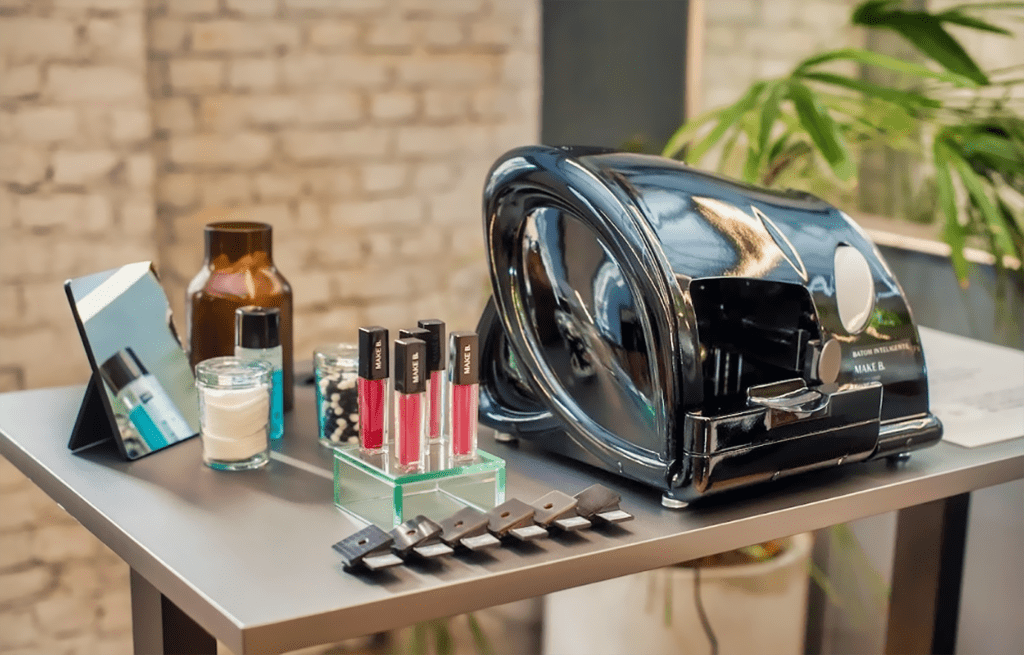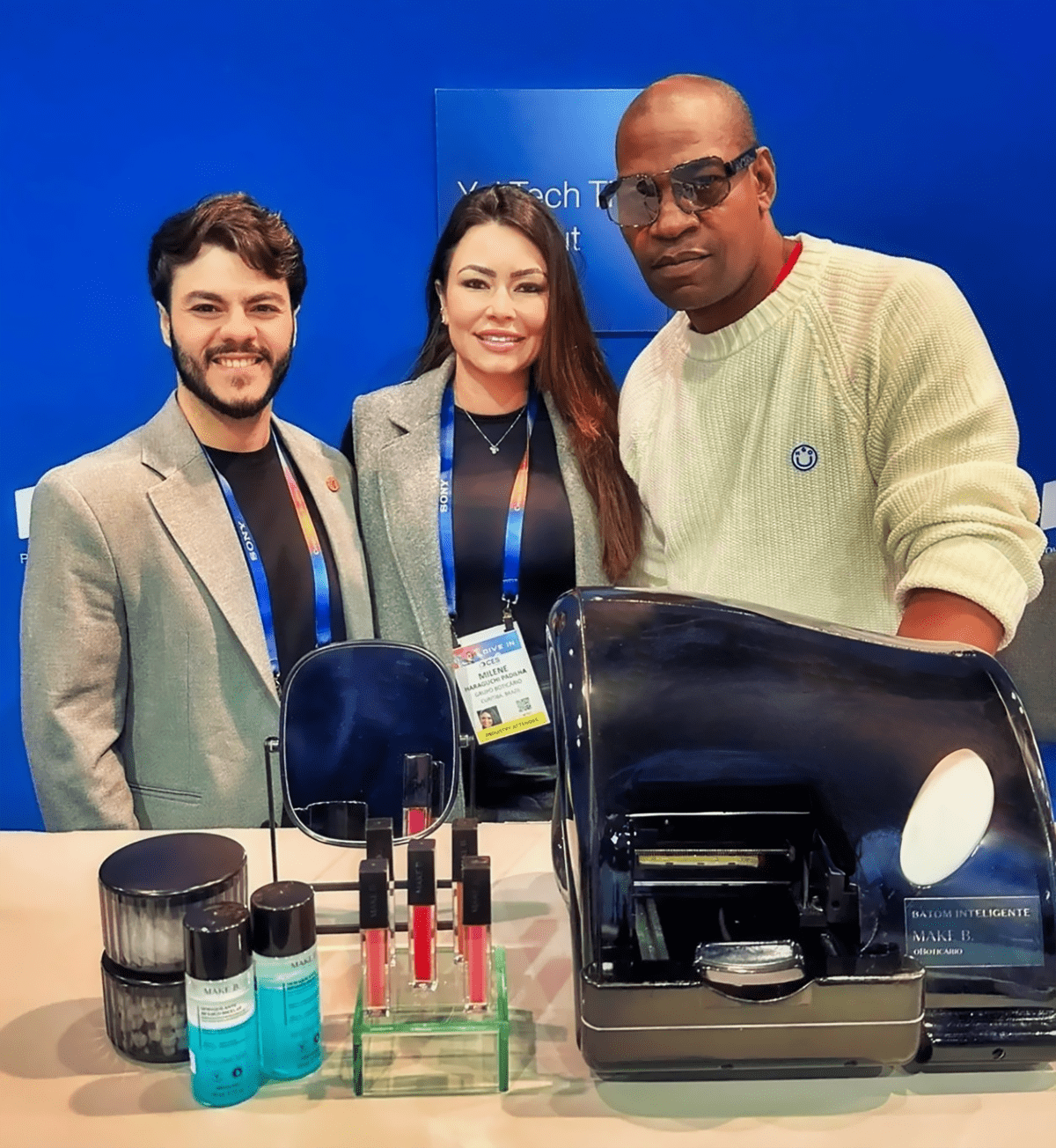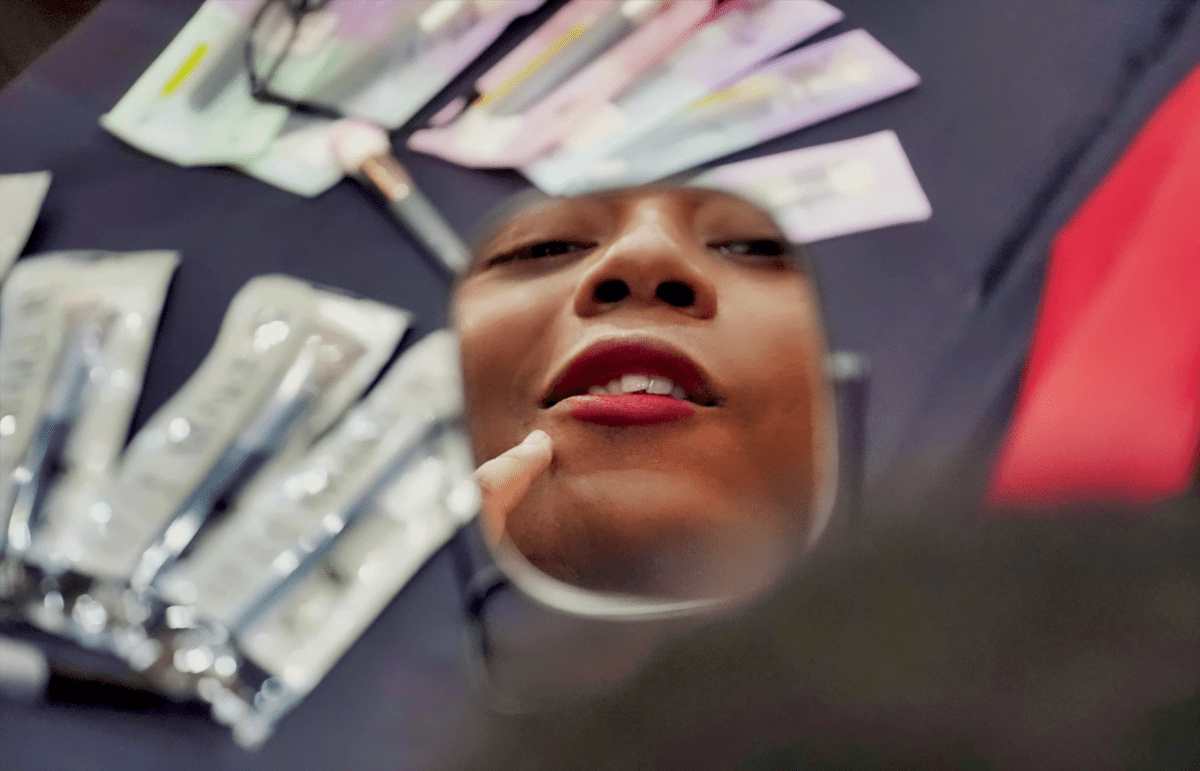A seven-year R&D odyssey culminates in Vegas, where smart lipstick meets social impact
The scene at Pepcom, the pre-launchpad for CES’s most groundbreaking innovations, wasn’t your typical Las Vegas spectacle. As one of the most anticipated events of CES 2025, Pepcom’s evening showcase draws more than 300 top-tier global journalists hunting for the next big tech stories.
By 8:30 PM, a small table staffed by four Brazilian innovators had become ground zero for media attention. AP shooters, AF-P reporters, and journalists from Mashable and PCMag crowded around what looked like a simple cosmetics display but represented something far more revolutionary: the world’s first AI-powered lipstick application system prototype being launched globally at Pepcom.
During the three-hour event, the Smart Lipstick prototype performed its ballet of precision — scanning faces, mapping lips, and applying color with robotic perfection in under two minutes. The gathered press corps wasn’t just witnessing a product demo. They were watching the beauty industry’s assumptions about accessibility get systematically dismantled.

“We believe that beauty is for all,” said Grupo Boticário research scientist and R&D expert Milene Haraguchi Padilha. The words could have been dismissed as “marketing speak,” except for one detail: her team had spent seven years of time with 42 coders, designers, and engineers — many of them from the world-renowned CESAR Innovation Hub located in Porto Digital, the tech hub that could, per WIRED magazine — developing this world first.
The Smart Lipstick R&D project exemplifies CESAR’s mission of developing technology that creates meaningful social impact. Operating globally in Brazil and Portugal, CESAR has built a reputation for transforming complex technical challenges into practical solutions that improve people’s lives.
With more than 1,100 professionals working across AI, computer vision, and other advanced tech, this R&D project joins a portfolio of more than 135 successful initiatives CESAR has delivered across 20 industry sectors in the past year alone, each aimed at tackling tomorrow’s challenges.
The breakthrough wasn’t just technical, though teaching AI to recognize diverse ethnic features across a database that didn’t previously exist is no small feat. Another innovation was in recognizing an overlooked market opportunity: the intersection of beauty and accessibility for an aging global population in most of the world that is increasingly experiencing more motor and visual limitations.
According to the World Health Organization’s latest demographic projections, by 2030, one in six people globally will be aged 60 years or over. This unprecedented demographic shift, combined with increasing life expectancy, creates what the World Economic Forum calls a “silver tsunami” of consumers seeking adaptive technologies.
Consider the numbers: The U.S. market for technology tailored to those 50 and older is projected to hit $120 billion by 2030, per the AARP and CTA. Yet the beauty industry, worth half a trillion dollars globally, has historically treated accessibility as an afterthought.
The 42-person R&D team from CESAR and Grupo Boticário saw this trend as an opportunity. “This is really good for self-esteem, we’re so proud to see how this technology empowers people to achieve more independence in their beauty routines,” Padilha shared during the demonstration as the robotic applicator precisely traced another set of lips. The emotion wasn’t theatrical. It was the culmination of seven years spent solving an overlooked problem.
“The response from our pilot program users in Brazil has been overwhelming. We’ve seen elderly women cry with joy at being able to apply lipstick independently again,” added Padilha.
The project’s media impact was immediate and global. O GLOBO, one of Brazil’s largest media outlets, broke the story and highlighted the system’s sophisticated computer vision capabilities. AF-P’s coverage positioned the innovation alongside other “age tech” solutions at CES 2025, the world’s largest technology showcase, from robot companions to smart glasses for the hearing impaired.
Later this month on January 21, Padilha will be featured on the “Yo! Tech This Out” podcast hosted by Futurist Mark Johns and distributed and produced by iHeart Radio.

(Courtesy of iHeart Radio)
In all, the media coverage from the Pepcom news launch reached more than half a billion people around the world across Africa, the Americas, Asia, the EU, the Middle East, and the U.K.
But perhaps the most telling detail wasn’t in the press coverage or the technical specifications. It was in the faces of those watching the demonstrations — TV producers, beauty industry veterans, and tech journalists alike — that they realized that true innovation isn’t always about creating something new but about making existing experiences more accessible to all.
While most beauty companies chase the next viral TikTok trend, this Brazilian R&D collaboration demonstrates how combining social impact with innovation can create solutions with lasting value.
“This is just the beginning of how AI will transform beauty accessibility,” says Giordano Cabral, Chairman of the Board for CESAR Innovation Hub who was one of four of the Pepcom team. “The technology we’ve developed has potential uses far beyond lipstick application. We’re looking at a future where adaptive beauty tech becomes as common as smartphone apps.”

